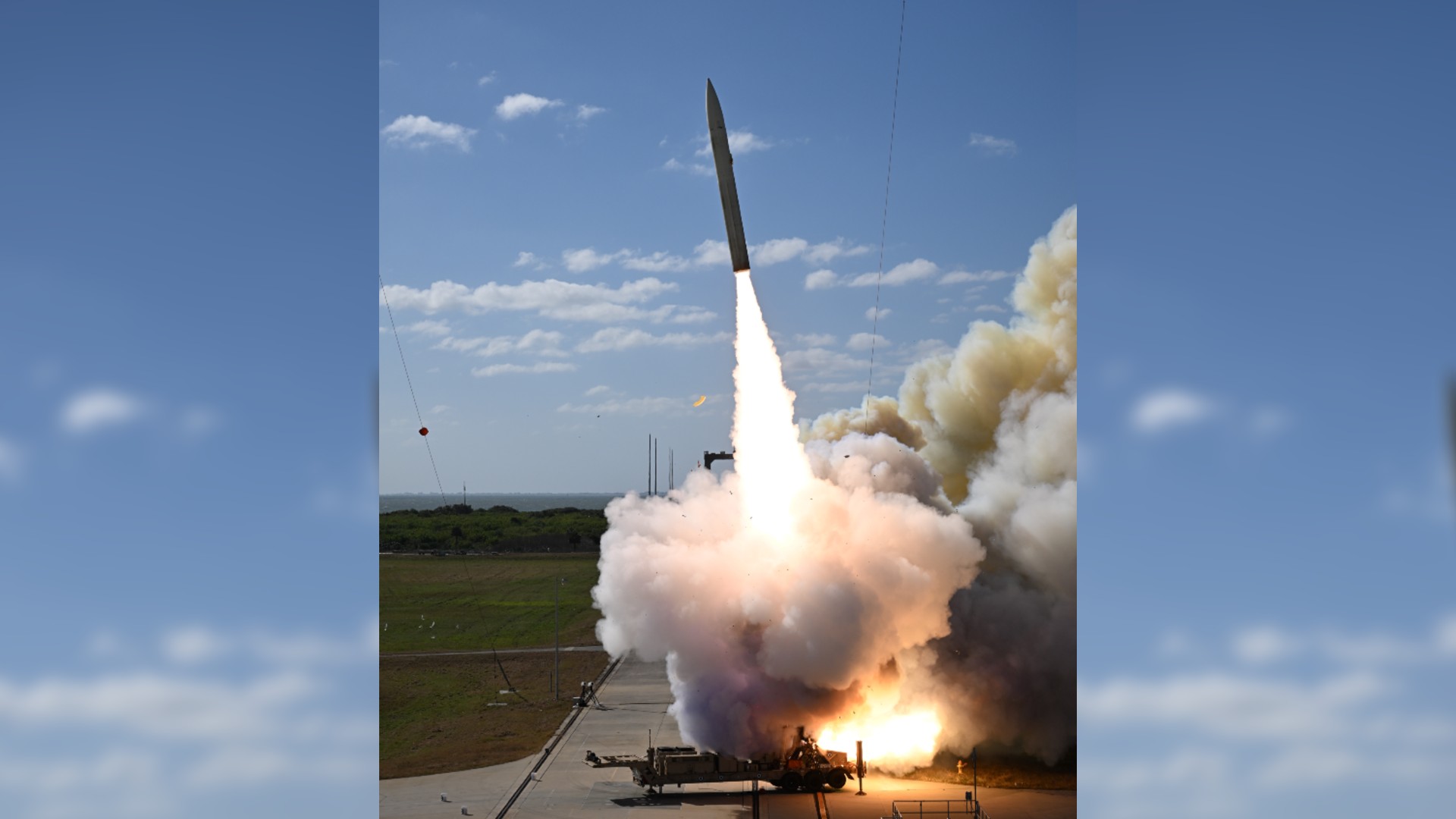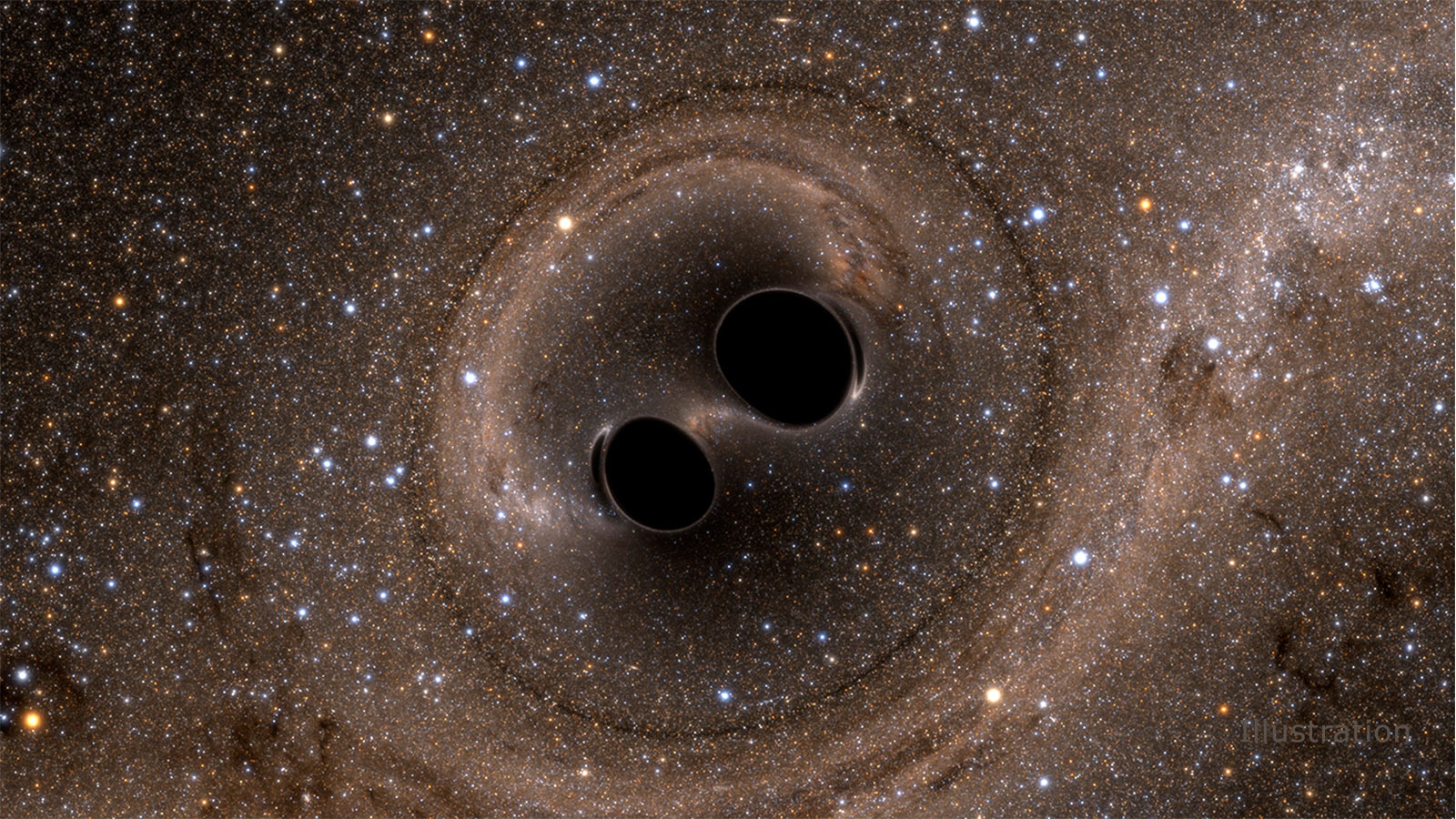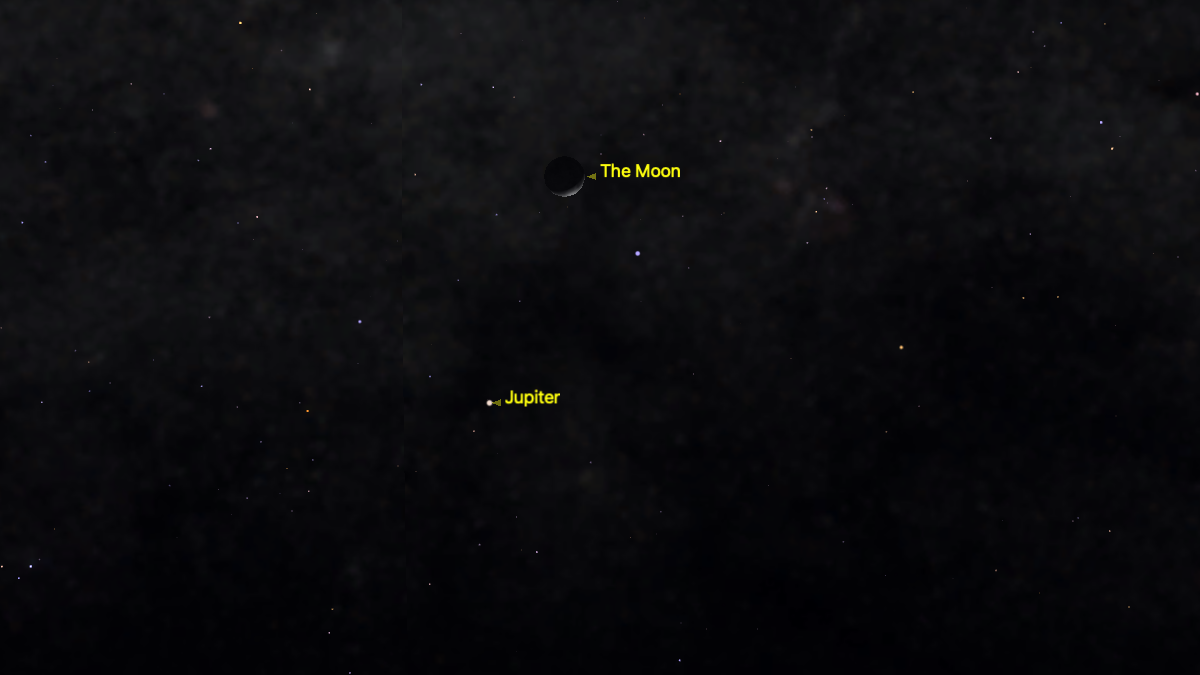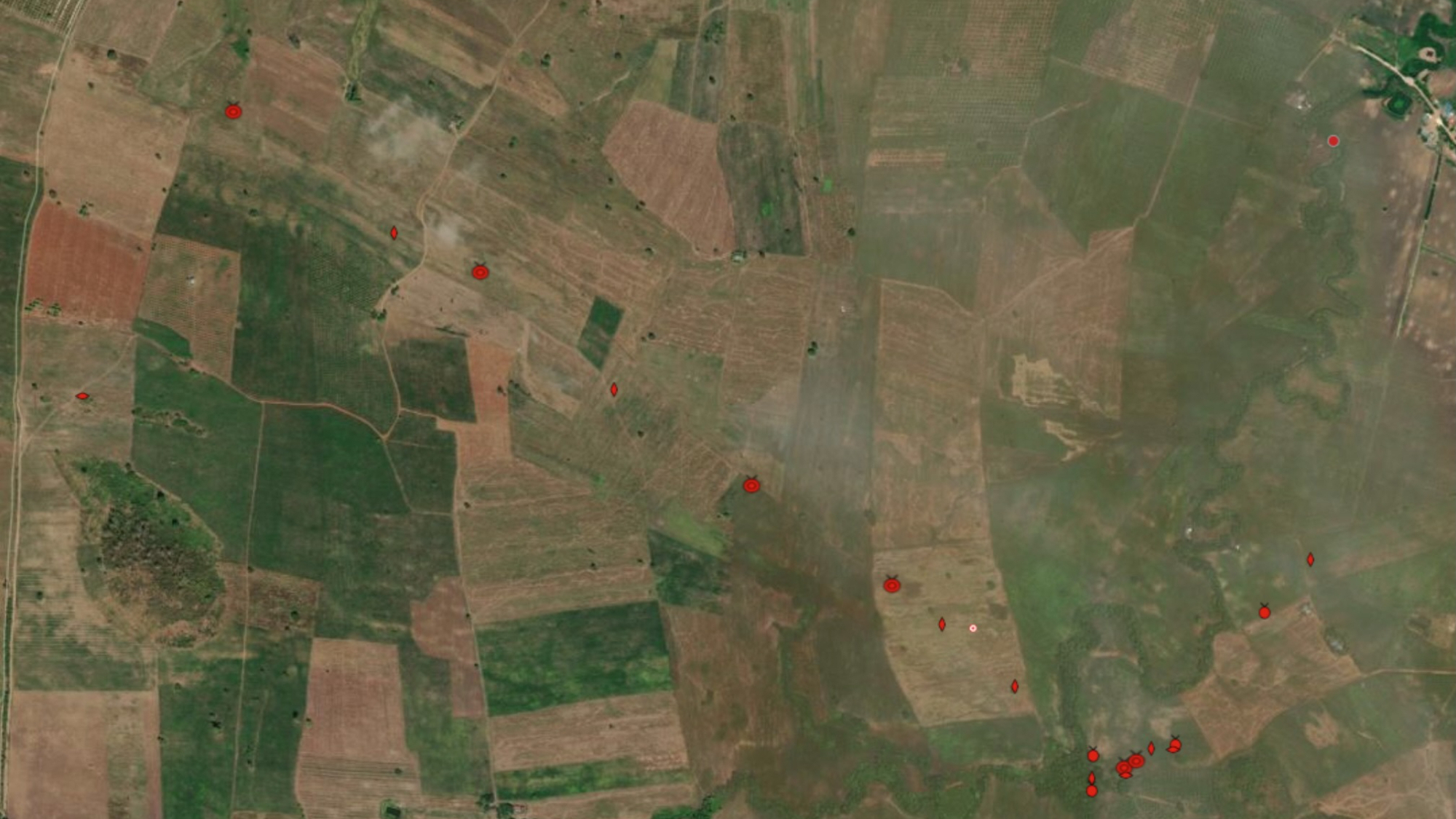'Starter' Earth grew in a flash. Here's how the planet did it.
If the solar system formed in 24 hours, then proto-Earth formed in just 1.5 minutes.
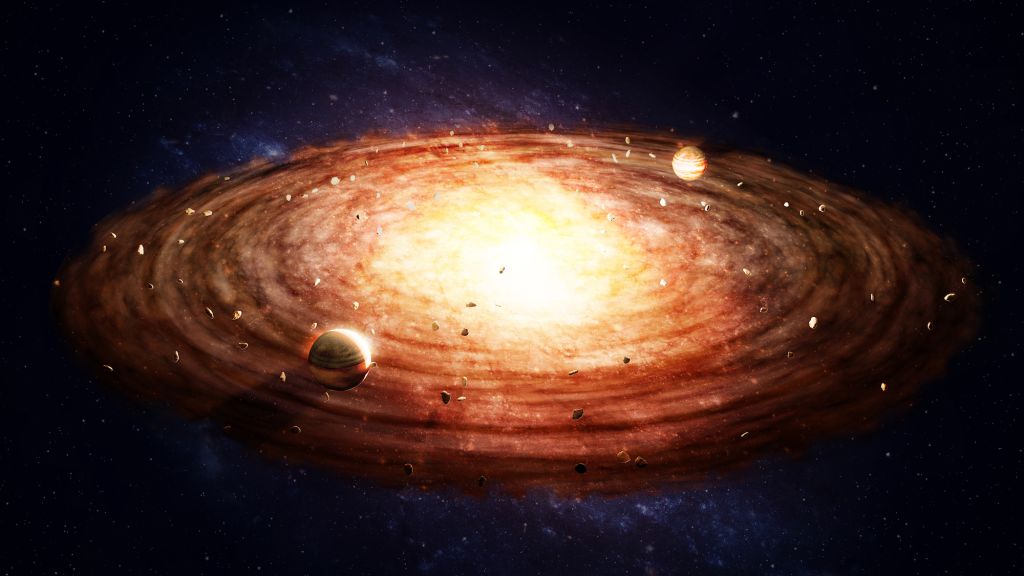
Dust from meteorites that crash-landed on Earth have revealed that Earth's precursor, known as proto-Earth, formed much faster than previously thought, a new study finds.
An analysis of this meteorite dust showed that proto-Earth formed within about 5 million years, which is extremely fast, astronomically speaking.
Put another way, if the entire 4.6 billion years of the solar system's existence were compressed into a 24-hour period, proto-Earth formed in just 1 minute and 30 seconds, the researchers said.
Related: Fallen stars: A gallery of famous meteorites
The new finding breaks with the previously held idea that proto-Earth formed when larger and larger planetary bodies randomly slammed into one another, a process that would have taken several tens of millions of years, or about 5 to 15 minutes in the fictional 24-hour timescale.
In contrast, the new idea holds that planets formed through the accretion of cosmic dust, a process in which dust attracts more and more particles through gravity. "We start from dust, essentially," study lead researcher Martin Schiller said in a statement. Schiller is an associate professor of geochemistry at the Centre for Star and Planet Formation (StarPlan) at the University of Copenhagen's Globe Institute, in Denmark.
With accretion, millimeter-size particles would have come together, "raining down on the growing body and making the planet in one go," Schiller said.
Get the Space.com Newsletter
Breaking space news, the latest updates on rocket launches, skywatching events and more!
Schiller and his colleagues made the finding by studying iron isotopes, or different versions of the element iron, in meteorite dust. After looking at iron isotopes in different types of meteorites, they realized that only one type had an iron profile that was similar to Earth's: the CI chondrites, which are stony meteorites. (The "C" stands for carbonaceous and the "I" stands for Ivuna, a place in Tanzania where some CI meteorites are found.)
The dust in these CI chondrites is the best approximation out there for the solar system's overall composition, the researchers said. In the solar system's early days, dust like this joined with gas and both were funneled into a accretion disk orbiting the growing sun.
Over the course of 5 million years, the solar system's planets formed. According to the new study, the proto-Earth's iron core also formed during this time, snatching up accreted iron from the proto-planet's mantle. Eventually, this proto-planet became the Earth we know today.
Message from Mars
Meteorites from Mars tell scientists that, in the beginning, the composition of iron isotopes in the material making up Earth were different than they were later on. This likely happened because heat from the young growing sun altered them, the researchers said.
After a few hundred thousand years passed, the area where Earth was forming became cold enough for unheated CI dust that came from farther away to become part of proto-Earth's accretion disc.
Given that iron from this far away dust is found in Earth's mantle today, it makes sense that "most of the previous iron was already removed into the core," Schiller said. "That is why the core formation must have happened early."
The other idea — that Earth formed when planetary bodies randomly collided with one another — doesn't hold, he said. "If the Earth's formation was a random process where you just smashed bodies together, you would never be able to compare the iron composition of the Earth to only one type of meteorite," Schiller said. "You would get a mixture of everything."
The new finding may also apply to other planets in the universe, the researchers noted. In essence, this means that other planets may grow much faster than previously realized. In fact, there is already evidence that this is likely the case, according to data on thousands of exoplanets in other galaxies, said study co-researcher Martin Bizzarro, a professor at StarPlan.
"Now we know that planet formation happens everywhere," Bizzarro said in the statement. "When we understand these mechanisms in our own solar system, we might make similar inferences about other planetary systems in the galaxy."
This process may even explain when and how often water is accreted during planet formation.
"If the theory of early planetary accretion really is correct, water is likely just a by-product of the formation of a planet like the Earth," Bizzarro said. "Making the ingredients of life, as we know it, [is] more likely to be found elsewhere in the universe."
The study was published online Feb. 12 in the journal Science Advances.
- Crash! 10 biggest impact craters on Earth
- Earth's 8 biggest mysteries
- Photo timeline: How the Earth formed
Originally published on Live Science.
Join our Space Forums to keep talking space on the latest missions, night sky and more! And if you have a news tip, correction or comment, let us know at: community@space.com.

Laura is an editor at Live Science. She edits Life's Little Mysteries and reports on general science, including archaeology and animals. Her work has appeared in The New York Times, Scholastic, Popular Science and Spectrum, a site on autism research. She has won multiple awards from the Society of Professional Journalists and the Washington Newspaper Publishers Association for her reporting at a weekly newspaper near Seattle. Laura holds a bachelor's degree in English literature and psychology from Washington University in St. Louis and an advanced certificate in science writing from NYU.
-
rod ReplyAdmin said:Proto-Earth was on a fast track to planet formation.
'Starter' Earth grew in a flash. Here's how the planet did it. : Read more
The article reported, "Schiller and his colleagues made the finding by studying iron isotopes, or different versions of the element iron, in meteorite dust. After looking at iron isotopes in different types of meteorites, they realized that only one type had an iron profile that was similar to Earth's: the CI chondrites, which are stony meteorites. (The "C" stands for carbonaceous and the "I" stands for Ivuna, a place in Tanzania where some CI meteorites are found.) The dust in these CI chondrites is the best approximation out there for the solar system's overall composition, the researchers said. In the solar system's early days, dust like this joined with gas and both were funneled into a accretion disk orbiting the growing sun. Over the course of 5 million years, the solar system's planets formed. According to the new study, the proto-Earth's iron core also formed during this time, snatching up accreted iron from the proto-planet's mantle. Eventually, this proto-planet became the Earth we know today."
I am reviewing different reports on this important accretion disk model for the proto-earth. Theia, the impactor with the proto-earth that created the Moon in the Giant Impact Model, the computer code likely will need some tweaks :) In the giant impact model, the proto-earth was 65% of the present mass and size, other computer simulations about 90% and more than 5 million years old. The new study shows the accretion disk last only about 5E+6 years, so the planets must form quickly. Iron Isotope Evidence for Very Rapid Accretion and Differentiation of the Proto-Earth , "Instead, the iron isotope signature of the mantle is consistent with a very rapid main accretion and differentiation of the Earth that occurred during the ~5 Myr disk lifetime."
This is a very short lifetime for the accretion disk used to explain the origin of the planets in our solar system. In 1999, studies showed T Tauri stars contained perhaps 332-333 earth masses in their *protoplanetary disks*, The Leonard Award Address: On the Difficulties of Making Earth-Like Planets
More recent (2020) computer simulations used in the accretion disk modeling for the origin of the solar system, the inputs use a one solar mass star, and more than 39,000 earth masses for the accretion disk, Dispersal of protoplanetary discs by the combination of magnetically driven and photoevaporative winds, "We start simulations from the early phase in which the disc mass is 0.118 M_{☉ } around a 1 M_{☉ } star and track the evolution until the disc is completely dispersed."
Today in the ecliptic that telescope users can see and study, there is about 447 earth masses documented from Mercury to Pluto. This new 5E+6 years lifetime starts to place real constraints on origin modeling for our solar system using the spinning, accretion disk approach. -
Torbjorn Larsson Replyrod said:This new 5E+6 years lifetime starts to place real constraints on origin modeling for our solar system
To remind us from the late Mars models based on similar isotope ratios, we can likely constrain Mars accretion to more or less precisely 10 Myrs after system formation https://www.space.com/early-mars-formed-slow-ancient-collisions-show.html ]. The paper prefers 10 Myrs from average disk dispersal and terrestrial accretion models. (With crust formation within 20 Myrs.) Simultaneously Moon rock dating has been shown to be contaminated and not relevant for dating the system formation, while the Neptune-Kuiper Belt gap as well as inner planet stable formation and Mars + asteroid belt low masses all require an outer system migration within 10 Myrs https://www.sciencemag.org/news/2020/01/cataclysmic-bashing-giant-planets-occurred-early-our-solar-systems-history ].
The take home message to me was that we have a consistent 10ish Myrs migration date where all the many models work, which is correlated with the disk dispersal date. Of course, somewhere between 5 to 20 Myrs may be where the bayesian credibility maxes out, maybe someone will try to aggregate the evidence soon.
Further, both Mars and Theia (that likely originated outside the debris belt) are respectively were Mars massed. The slower Mars and Theia accretion - being mostly outside the rain of the chondritic composition pebbles onto Earth (likely the gas giant migration had part in the definition and dynamics of the pebble clouds) - were cut off by the protoplanetary disk dispersal near enough concurrent with the gas giant migration. In the new models time at accretion end is < 5 Myrs for proto-Earth Tellus, 10-20 Myrs for Mars, while we know Theia hit Tellus at 50 Myrs to make Earth and Moon. (The glancing angle models have Theia matter end up at the core-mantle boundary. Personally I suspect the two crumpled up LLSV provinces at opposite equatorial sides of Earth at the core-mantle boundary https://en.wikipedia.org/wiki/Large_low-shear-velocity_provinces ] could be the unique result of the then rapidly spinning Earth primordial crust being ripped and forcibly sunk by the new magma ocean flooding. The mass and density fits. And they seem to leak primordial volatile material to the correlated super plumes as well as to where the kimberlite diamonds can pick it up beneath the continental crust.) That nicely explain these planets smaller mass as well as their more disturbed - in Theia's case very disturbed - orbits.
From here on, some loosely tied together speculation that - like the LLSV speculation - has little to no modeling behind:
The metal core Psyche parent could also have originated further out and its debris being located inside its original orbit due to the gas giant migration. A very odd result that may bear on this is that among the 50 k meteorites https://en.wikipedia.org/wiki/Meteorite ] there seems to be only 100 - 200 parent bodies ("families") https://www.sciencedirect.com/science/article/pii/S0016703720301058 ], which is close enough to the orbital + spectroscopic classifications https://en.wikipedia.org/wiki/Asteroid_family ]. Maybe much of the debris belt is really debris, of a group of planetesimals that were too close to Jupiter to make it undisturbed. Psyche mass at ~1 % of the total would fit that reasonably well.
In that perspective, Ceres as a late capture in connection with the gas giant migration seems the better model https://en.wikipedia.org/wiki/Ceres_(dwarf_planet)#Origin_and_evolution ]. Pallas is also round-ish, but the newest observations tell us it is a *really* beat up, oddly orbiting body https://www.space.com/asteroid-pallas-craters-violent-history.html ]. -
rod For me, I understand that the iron isotope study using meteorites placed a real, 5E+6 year timeline constraint on the proto-earth formation time because the disk lasted only this long with the small dust grains. Discussions about giant impacts in the solar system depend upon how much computer models use as input disk mass initially (that includes dust grains), and how long the disk can last. There are wide variations reported now. Studies in 1999, T Tauri stars contained about 330 or so earth masses. This year in 2020, computer simulations use > 39,000 earth masses. Present day astronomy based upon what telescopes can *observe*, shows about 447 earth masses from Mercury to Pluto, most of this is in Jupiter. The new iron isotope for the formation of the proto-earth, places the 5E+6 year formation time that conflicts with other studies using different isotopes. The story of the origin of our solar system is getting very interesting :)Reply -
Torbjorn Larsson Replyrod said:Discussions about giant impacts in the solar system depend upon how much computer models use as input disk mass initially (that includes dust grains), and how long the disk can last. There are wide variations reported now.
That variation is why I would like to see a bayesian credibility distribution analysis of some selected newer models, There likely are too many models to analyse them all, but there are some subsets like those I mentioned that concur roughly on the datings.
Disk masses, dispersal and models are pretty fuzzy subjects, the ALMA images for instance show features that models had not, and pebble cloud formation and accretion are relatively new too et cetera. That is interesting, but also a vast subject and with less possibility of a context of bayesian synthesis as the subject advances (though maybe the disk mass you mention could be used).






